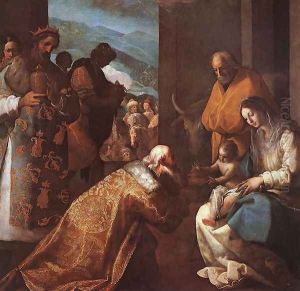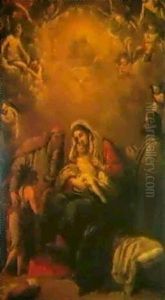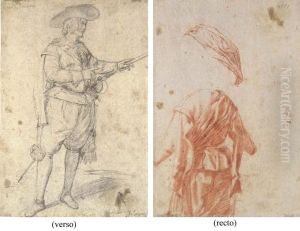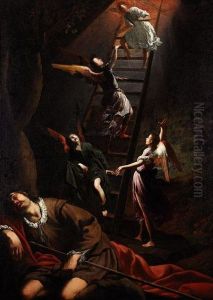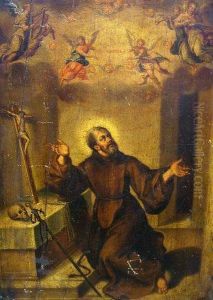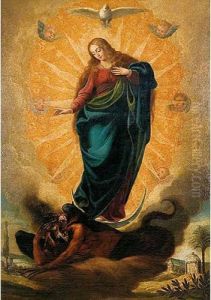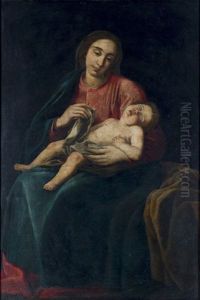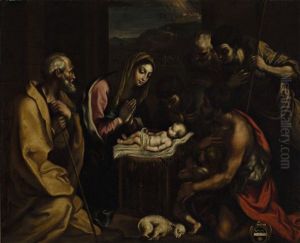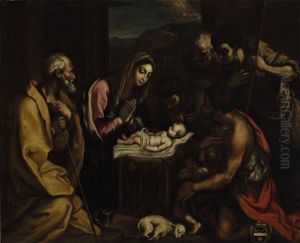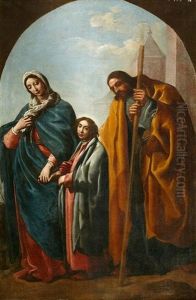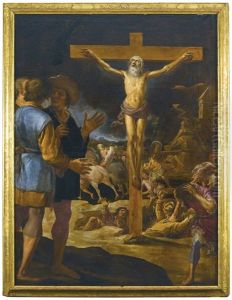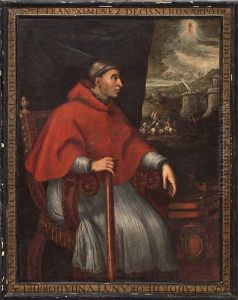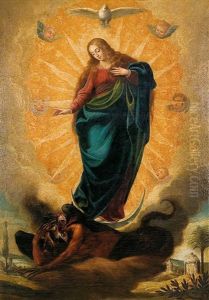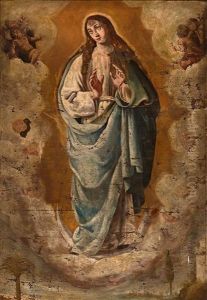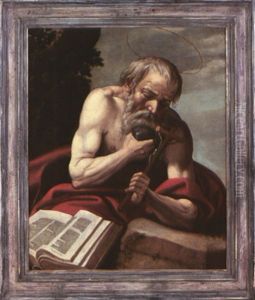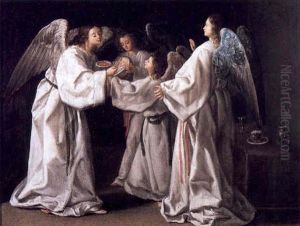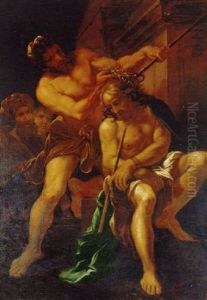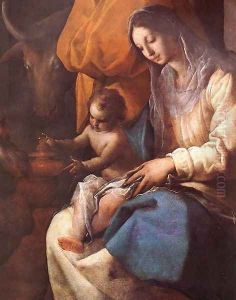Eugenio Cajes Paintings
Eugenio Cajes was a notable Spanish painter, born in Madrid in 1575, during the period of the Spanish Renaissance, an era that witnessed a flourishing of arts and culture under the patronage of the Habsburg monarchs. Cajes came from a family deeply involved in the arts; his father, Patricio Cajes, was also a painter, which provided Eugenio with an environment rich in artistic influence from a very young age. This familial background played a crucial role in his development as an artist, setting the stage for a career that would see him contributing significantly to the Spanish painting scene of his time.
Cajes received his early training from his father and later his skills were honed at the prestigious Royal Court, where he worked under the guidance of influential artists of the era. His style was deeply influenced by the Italian Renaissance, particularly by the works of Raphael and Caravaggio, whose influence can be seen in the dramatic use of light and shadow in his paintings, as well as the emotional depth of his figures. Despite these influences, Cajes developed a distinctive style that was very much his own, characterized by a keen eye for detail and a profound sensitivity to the human condition.
Over his career, Eugenio Cajes became known for his religious works, portraits, and mythological scenes, which were highly praised for their expressive intensity and technical mastery. His ability to convey complex emotional states and his skillful use of color and form made his works stand out among his contemporaries. Cajes served as a court painter to the Habsburgs, a prestigious position that provided him with the opportunity to work on significant projects, including decorations for various royal residences and churches.
Despite his success, Cajes is not as widely recognized today as some of his contemporaries. However, his contributions to the Spanish Renaissance and Baroque art are undeniable. His works are preserved in several major museums and collections, where they continue to be studied and admired for their artistic merit and historical significance. Eugenio Cajes passed away in 1634, leaving behind a legacy of artistic achievement that continues to be celebrated by art historians and enthusiasts alike.
